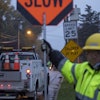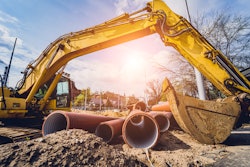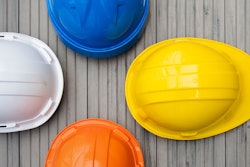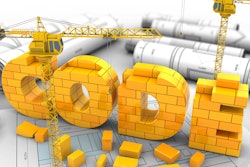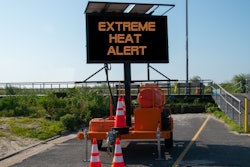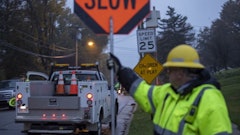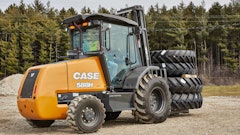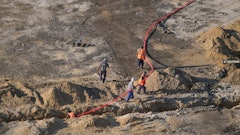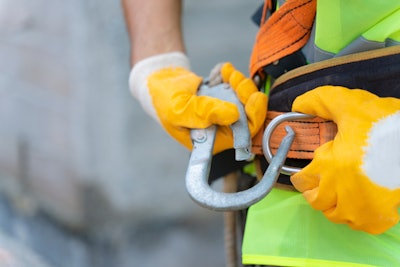
Kevin McOsker from the International Code Council joined us for a Q&A on building safety, and some of the most common safety mistakes made in construction. McOsker, vice president of technical services, talked about the importance of safety in construction and what we can all do to improve our safety efforts.
FCP: Why are building codes important to building safety?
KM: Building codes are a key component of public safety, ensuring that the places we live, work and play are safe. They are meticulously crafted by experts to safeguard communities against potentially hazardous occurrences such as fires, severe weather events and potential structural failures. The International Codes, or I-Codes, are updated constantly to reflect the latest in building safety and building science to reflect new knowledge, advanced technologies and evolving human behavior. With the ever-changing complexity of the built environment, it's crucial that construction projects adhere to building codes and standards to ensure safety, sustainability and resiliency.
FCP: What is needed to improve building safety?
KM: Public awareness, community acceptance and support from elected officials to ensure requisite training and staffing for building and fire prevention departments, the adoption of current codes and standards, and the continued advancement of national model codes from code officials and all stakeholders. Model codes must continue to evolve, with lessons learned from past events, best practices, and advancements in building sciences and technology. To have the maximum effect, those codes must be regularly adopted and effectively implemented by state, local, tribal, and territorial governments. Adoption and implementation require sufficient prioritization and the needed resources for code departments, by our elected officials. Public awareness and education are necessary given the important role building codes play in mitigating the multitude of hazards in the built environment. Codes and code enforcement departments are the silent defenders of public safety; when buildings perform, nothing happens. When the codes and enforcement agencies have adequately protected the public, there is little to no recognition of the role construction codes and enforcement agencies played in safeguarding the public.
FCP: What are some of the most common mistakes or preconceived notions when it comes to improving and maintaining building safety?
KM: Eight out of ten individuals in communities living in areas with outdated codes describe their codes as up-to-date. At the same time, survey respondents view public officials’ responses to and preparation for disasters as more important than taxes, business, and the environment. The dichotomy between actual versus perceived protection is a significant hurdle toward improved building safety. The prioritization of code adoption and necessary resources to support code enforcement agencies is a critical need in the preparation for disasters, just as other pre-disaster preparation is performed. Greater public awareness of the protection afforded by currently adopted codes is critical for ensuring the public’s expected prioritization is carried out by local officials.
FCP: What can construction contractors do today to improve the safety of their crews on jobsites?
KM: The International Building Code provides for certain safeguards during construction that contractors should consider in the effort to provide safety to their crews. These include storage and placement of construction equipment and material so that they do not endanger the public, the construction workers, or the adjoining properties; roof loading of materials and equipment during installation is structurally supported by the roof framing; and there is the maintenance of exits, existing structural systems, fire protection devices and sanitary safeguards during alterations, repairs, and additions to an existing building; and waste materials are removed in a manner that prevents injury or damage to persons or adjacent properties. Both the building and fire codes provide for site safety plans establishing a fire prevention plan for new construction projects and work occurring in existing buildings. The site safety plan includes multiple elements for consideration to provide safety during construction, as well as some key daily inspection points for the site safety director to consider. Large fires on construction sites have brought these hazards to the forefront of the codes and are an example of the evolution of the I-codes to protect the built environment and those in and around that environment.
FCP: What are some of the latest building code changes and why are they important?
KM: The Code Council emphasizes the importance of adopting and effectively implementing modern building codes. Modern codes, when properly implemented and enforced, significantly enhance community resilience and safety in the built environment.
The 2024 International Codes (I-Codes) include several important updates that contractors should be aware of. For instance, the 2024 International Building Code (IBC) includes first ever tornado resistance provisions, while both the IBC and International Residential Code (IRC) include updated snow loads, that integrate the latest of research on climatic conditions and snowfall data. Both the IRC and International Fire Code (IFC) include new provisions to address hazards associated with rapidly advancing energy storage systems technologies, including protections concerning for storage batteries in garages, research, storage, and manufacturing of Lithium-ion battery technologies, and charging micro mobility devices. International Energy Conservation Code (IECC) improves energy efficiency by about 6.5% compared to previous versions. This not only helps reduce energy usage and greenhouse gas emissions but can also promote cost savings.
Additionally, the 2024 International Mechanical Code (IMC) includes key considerations to facilitate the transition to A2L refrigerants, a more environmentally friendly refrigerant recognized by the EPA’s Significant New Alternatives Policy (SNAP). These updates are especially important as A2L refrigerants will soon become more commonly used in residential and light commercial air conditioning and heat pump systems applications. The 2024 International Plumbing Code (IPC) boosts water conservation from showerheads by 20% and ensures support for buried piping beneath buildings where expansive soil conditions exist.




